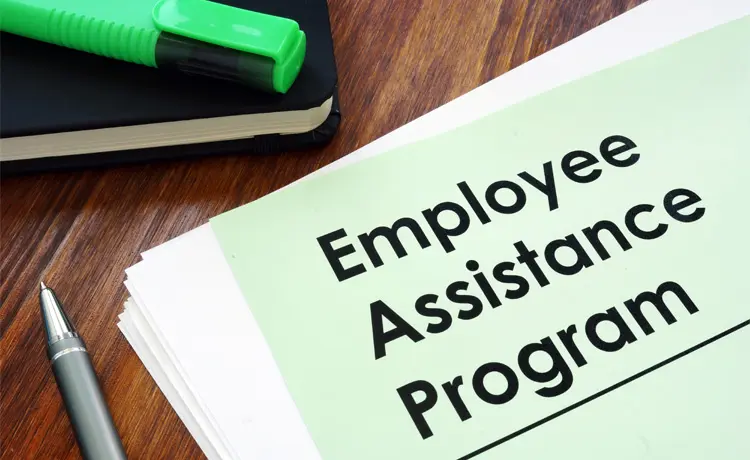A certain employee is consistently arriving late for work and rumors of marital trouble and alcohol abuse are circulating the workplace. As an employer, what actions should you take? Having an effective Employee Assistance Program in place can guide you in addressing these types of tough situations and supporting your staff members when they need it most.
What exactly is an Employee Assistance Program?
An Employee Assistance Program is an employer-sponsored program offered to staff (and typically their immediately family) at no cost. These programs are designed to help employees identify and find help for work-related and personal problems that may be having a negative impact on their performance, and overall mental and emotional well-being at work. This type of program can address a wide range of issues, including financial struggles, dealing with conflict, stress or family/marital problems, health and wellness concerns, grief, substance abuse and even adoption or elder care.
What are some benefits to having this type of program?
- Enhance productivity. If employees are dealing with personal problems, whether at home or at work, they can become distracted and unmotivated. Reduce the possibility of conflict, sluggish productivity and even work-related accidents by providing access to professional services and/or referrals.
- Reduce absenteeism. Prolonged stress is known to cause health conditions and poor performance, and can lead to chronic absenteeism. An Employee Assistance Program may include a host of mental health services, such as counseling and health coaching. If an employee makes use of these, they can effectively manage their stress. This can translate into less sick days or time off work for medical appointments.
- Promote a positive workplace culture. Having to handle tremendous amounts of pressure and stress can make a typically friendly and collaborative team member defensive and abrasive. Particularly heated meetings or encounters have the potential to escalate into conflict or even workplace violence. Giving employees the guidance and support they need to better manage stress and personal strain can help boost team morale.
- Increase employee retention. The more a staff member feels supported by their colleagues and superiors, the more likely they are to stay put. This means that your organization gets to keep the talented individuals you invest time, money and effort in.
- Attract new hires. While it may not make or break an offer for a potential hire, when it comes to attracting fresh talent to your organization, offering different types of employee benefits help more than hinder. When a company proves that it cares for its workers' personal goals and well-being, that's definitely not a bad thing.
What are necessary steps to developing an Employee Assistance Program?
- Put a team together, including personnel from the Human Resources department. Decide if your program will be handled internally or externally. Both types have their pros and cons and should be considered carefully. Regardless of which you choose, both models must employ strict regulations in regard to privacy and confidentiality.
- Draft a comprehensive policy for the program. Documentation should address the program's mission and goals, and explain how employees will go about accessing services.
- Promote the program to your organization and highlight its services and benefits.
How do I make sure my company's program is as successful as possible?
For an Employee Assistance Program to be helpful and successful, your people need to know it's there; visibility is key. Consider holding learning sessions with program handouts, putting up posters in common areas or distributing pamphlets or reminder cards at quarterly meetings and town-halls. Make sure the types of services provided are clear to everyone. At this point, you'll want to emphasize confidentiality and address any privacy concerns so your staff can feel confident in reaching out with more sensitive issues. It might also be beneficial to meet with supervisors and team leaders to leverage their help in publicizing the program and encouraging its use. In working closely together, they may be more inclined to notice when something is bothering a colleague or that their level of productivity or performance is suffering. For more information on various workplace topics, browse the QuickSeries® library of Work Life & Safety guides, including: Improve Your Emotional Wellness at Work, Fitness At Your Desk, and Civility in the Workplace. Looking for a custom QuickSeries® product? Contact an Account Manager!
